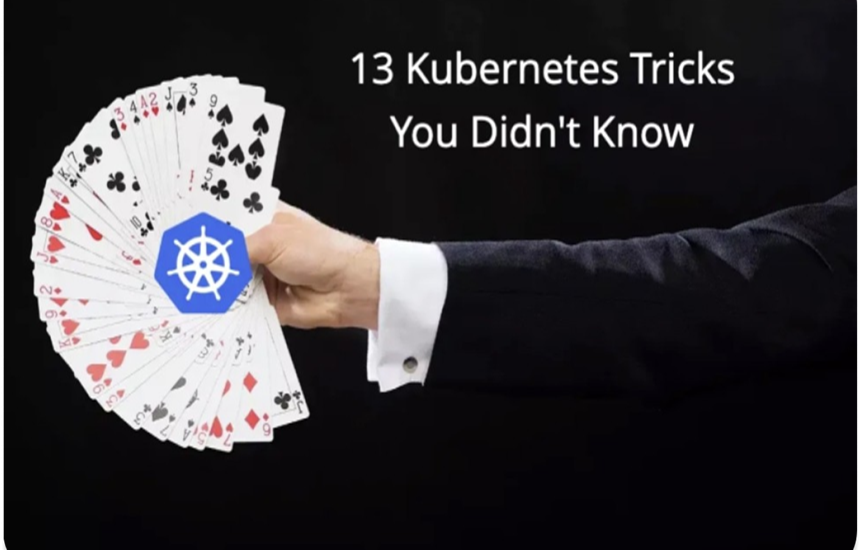13 Kubernetes Tricks You May Not Know
Kubernetes enhances container management, scalability, and security through various features. Here’s a condensed overview of 13 essential tricks:
01 – Graceful Pod Shutdown with PreStop Hooks:
- Use PreStop hooks to execute cleanup tasks before pod termination, ensuring smooth restarts and preventing data loss.
02 – Automated Secret Rotation with Kubelet:
- Automate secret updates without pod restarts, maintaining security without downtime.
03 – Debugging with Ephemeral Containers:
- Attach a temporary debug container to a running pod for live issue investigation without affecting its state.
04 – Horizontal Pod Autoscaling (HPA) with Custom Metrics:
- Scale deployments based on custom metrics beyond CPU and memory, aligning with specific performance indicators.
05 – Setup with Init Containers:
- Use init containers for setup tasks before starting the main application, ensuring dependencies are met.
06 – Node Affinity for Specific Scheduling:
- Apply node affinity rules to direct workloads to appropriate nodes, optimizing performance and compliance.
07 – Pod Isolation with Taints and Tolerations:
- Control pod placement on nodes using taints and tolerations, isolating workloads as needed.
08 – Priority and Preemption for Critical Workloads:
- Assign priority to pods, allowing important ones to preempt others, ensuring resource availability.
09 – Dynamic Configuration with ConfigMaps and Secrets:
- Inject configuration data into pods through ConfigMaps and Secrets, facilitating easy updates and secure data handling.
10 – Container Debugging with kubectl debug:
- Create a temporary pod for troubleshooting without impacting the original pod’s operation.
11 – Efficient Resource Management with Requests and Limits:
- Define CPU and memory requests and limits, balancing resource allocation and preventing monopolization.
12 – Extending Kubernetes with Custom Resource Definitions (CRDs):
- Use CRDs to add custom resources, enabling domain-specific functionalities within Kubernetes.
13 – Automation with the Kubernetes API:
- Leverage the Kubernetes API for dynamic cluster interaction, supporting sophisticated automation and integration. These tricks streamline Kubernetes operations, enhancing efficiency, security, and adaptability in managing containerized applications.
Original Article:
For more details about the provided tricks, check the below link:
https://overcast.blog/13-kubernetes-tricks-you-didnt-know-647de6364472
For any technical assistance or further inquiries, whether for business or personal use, we are here to help, Feel free to reach out to us at Info@registfy.com








Awesome page with genuinely good material for readers wanting to gain some useful insights on that topic! But if you want to learn more, check out Webemail24 about Website Design. Keep up the great work!